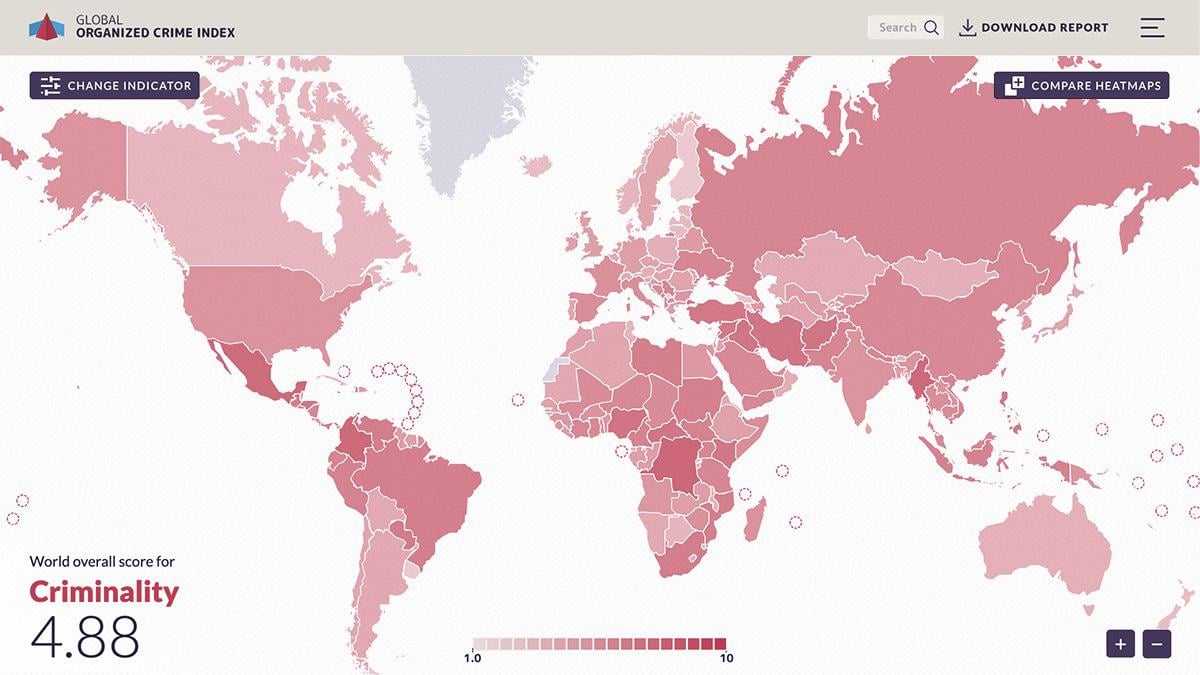Crime rates in Latin America (LATAM) have long been a topic of discussion, with many wondering why this region experiences higher levels of crime compared to other areas with similar or even lower levels of development. The prevalence of organized crime in Central and South America is a notable factor contributing to this trend, as highlighted by rankings that place these regions at the top of the list alongside the Middle East, which is marked by active war zones. This disparity raises questions about the underlying reasons behind LATAM’s elevated crime rates despite its middle-income status and relative stability compared to other regions facing significant political turmoil.
When examining the rankings of organized crime by region, Central America and South America hold the top positions, with the Middle East following closely behind due to its ongoing conflicts. This data underscores the complex relationship between crime rates and the socio-political landscape, revealing a concerning trend in LATAM that demands further exploration. Additionally, on a country level, three out of the top five nations with high crime rates hail from LATAM, with the remaining two countries grappling with their own sets of challenges, including political instability and unrest.
The economic status of LATAM countries plays a crucial role in understanding the dynamics of crime within the region. Despite being classified as middle income and comparatively better off than regions like sub-Saharan Africa, Southeast Asia, and the Middle East, LATAM continues to struggle with disproportionately high crime rates. This discrepancy raises intriguing questions about the underlying factors driving criminal activities in LATAM and challenges prevailing assumptions about the correlation between economic development and crime prevalence.
It is a sobering reality that the Mexican government’s war on drugs has resulted in a higher death toll than the combined casualties of the USA’s military interventions in Iraq and Afghanistan. This startling comparison sheds light on the severity of the challenges faced by LATAM nations in combating organized crime and addressing the root causes of violence.
Comparative analyses further illuminate the complexities of crime rates in LATAM when juxtaposed with countries of similar development levels. For instance, countries like Chile and Argentina, which share comparable levels of development with Turkey, exhibit higher crime rates despite Turkey’s proximity to volatile neighbors like Iran, Iraq, and Syria, as well as hosting millions of refugees. This observation underscores the multifaceted nature of crime dynamics, suggesting that factors beyond economic development alone influence crime rates in different regions.
The sources cited provide valuable insights into the intricacies of organized crime rankings, shedding light on the global landscape of criminal activities and their impact on various regions. By delving into these rankings, one gains a deeper understanding of the challenges faced by LATAM nations in combatting organized crime and addressing the underlying social, economic, and political factors contributing to heightened crime rates. These sources serve as critical reference points for further research and analysis aimed at addressing the root causes of crime in LATAM and devising effective strategies for fostering safer communities.
In conclusion, the issue of high crime rates in LATAM compared to other regions with similar or lower levels of development is a complex phenomenon that defies simplistic explanations. Factors such as organized crime, historical contexts, socio-economic disparities, and geopolitical influences all intertwine to shape the crime landscape in LATAM. By unraveling these complexities and engaging in nuanced discussions, stakeholders can work towards developing comprehensive solutions that address the root causes of crime and promote sustainable peace and security in the region.

